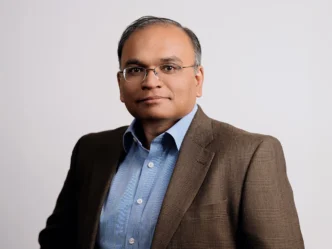Forerunner Ventures has built its name on spotting the next wave of consumer startups—from Warby Parker and Glossier to Ōura and Chime. But what sets the firm apart isn’t just its portfolio—it’s how it’s redefining what success looks like in modern venture capital.
Thirteen years after it began backing design-driven brands, not one of Forerunner’s top consumer startups has followed the traditional IPO route. Some, like Warby Parker, went public through alternative means, such as a SPAC. Others, like Bonobos, exited via acquisition. And many, like Glossier and Ōura, are still private and thriving—without any immediate plans to list.
For founder Kirsten Green, that’s not a problem. In fact, it reflects how much the venture model has evolved. “We haven’t even gotten to the thought around our table about selling,” she said last week at TechCrunch’s StrictlyVC event. “We’re here for the growth that’s happening.”
Venture Capital Is Learning to Wait—and Get Creative
Green’s comments come at a time when the venture world is recalibrating expectations. With the IPO market sluggish and M&A exits increasingly rare, VC firms are turning to the secondary market—where private shares are bought and sold—to deliver returns and manage exposure.
“Companies are waiting so long to go public,” Green explained. “If you now need to be a double-digit billion-dollar company to stage a successful IPO, it takes time to get there.” And that’s where secondary markets come in: they offer earlier liquidity, price transparency, and a new way for firms to rebalance their portfolios—without waiting for a traditional exit.
At Forerunner, this shift has been strategic. Green said her team actively participates in secondary deals—both buying and selling—as a practical solution to an extended growth timeline.
From Chime to Ōura: Not Every Startup Needs an IPO
Forerunner backed fintech giant Chime early on. Though it confidentially filed for an IPO, its valuation journey has been volatile. From $25 billion at its peak in 2021, it reportedly dipped to $6 billion in the secondary market, then climbed again to around $11 billion.
That kind of price movement isn’t necessarily bad news, Green argued. Unlike a Series D, where a valuation is set between one investor and the company, secondary markets have many players. “You’ve got more people in the mix,” she said. “That brings better price discovery—even if it’s at a discount.”
Then there’s Ōura, the smart ring startup with no rush to go public. And that’s fine, said Green. She called the company “off-the-charts phenomenal,” emphasizing that success doesn’t have to mean a ticker symbol. “We’re still investing in their growth,” she added.
Forerunner is Betting Early on Behavior Shifts—and Long-Term Growth
What allows Forerunner to be patient? It’s their focus on early-stage investing. By getting in before a company reaches scale, they gain flexibility—and potentially more upside.
The strategy has paid off. Forerunner saw breakout wins with early mobile-social brands like Bonobos and Glossier. Later, it leaned into subscription-first models like The Farmer’s Dog, which now boasts $1 billion in annualized revenue and profitability.
Today, Green says Forerunner is doubling down on the intersection of cultural trends and invention. Rather than chasing quick exits, they’re building for long-term market shifts—an approach that fits the modern VC landscape, where timelines are longer, exits are fewer, and creativity is essential.
“Great companies need time to develop,” Green said. And increasingly, so does venture capital.













